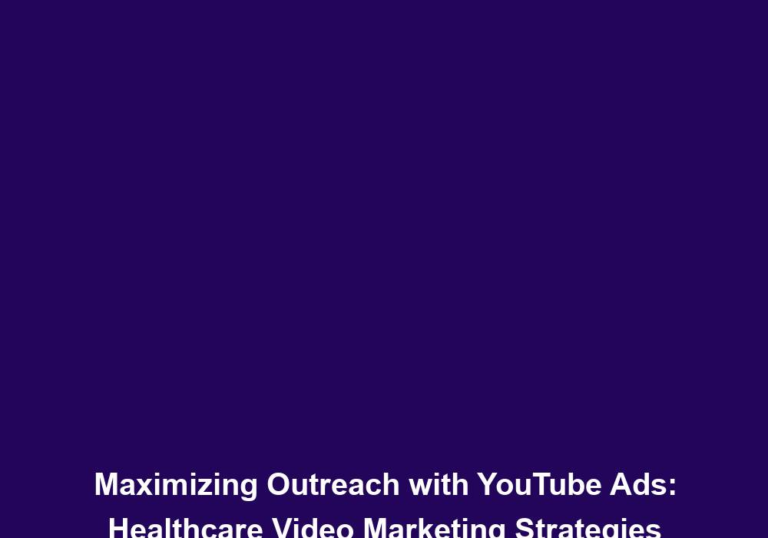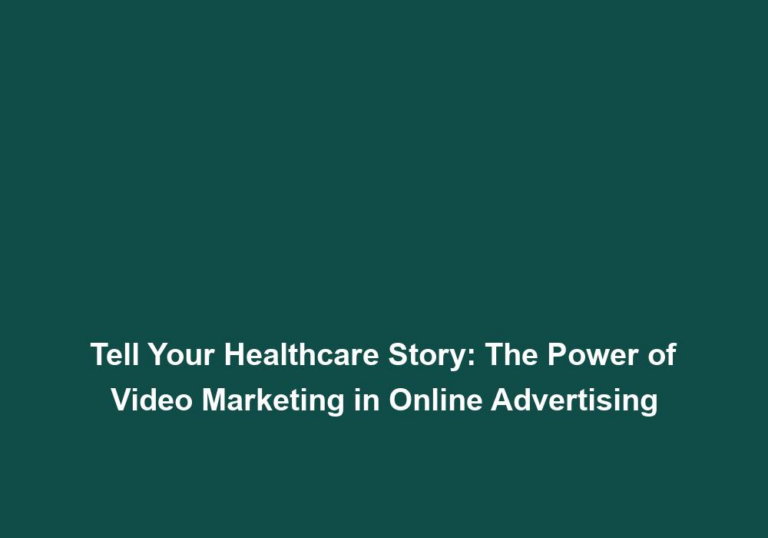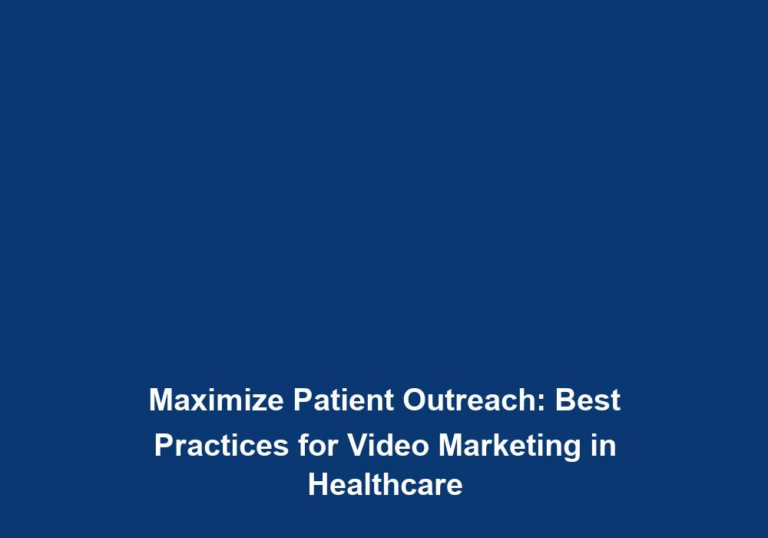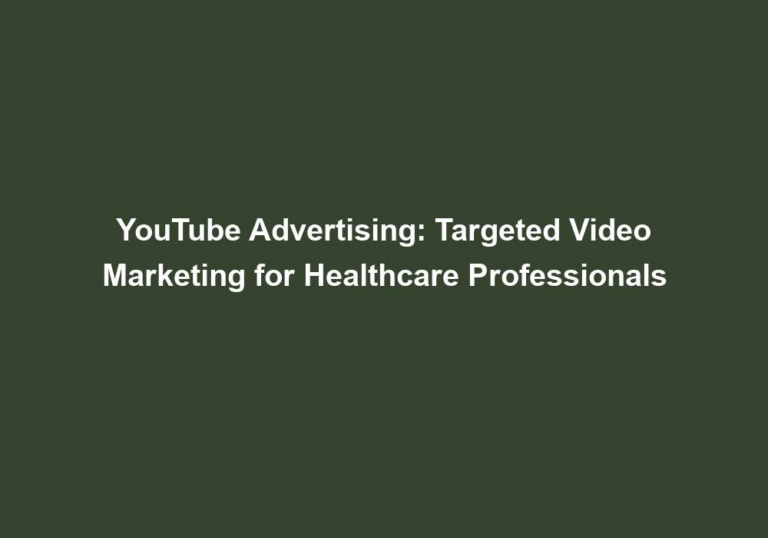Engage and Educate: Crafting Impactful Educational Medical Videos
In today’s digital age, educational medical videos have become a powerful tool in disseminating information, raising awareness, and promoting health literacy. With the increasing popularity of online platforms and the ease of sharing videos, creating engaging and informative content has never been more important. This article will guide you through the process of crafting impactful educational medical videos that effectively engage and educate your audience.
Importance of Educational Medical Videos
Medical videos have revolutionized the way healthcare professionals and patients access information. They provide an immersive experience that combines visual and auditory elements, making complex medical concepts more easily understandable. These videos can be used for a variety of purposes, including:
-
Patient Education: Educational medical videos empower patients to take control of their health by providing them with valuable information about various medical conditions, treatment options, and preventive measures. Patients who are well-informed are more likely to actively participate in their treatment plans, leading to increased patient engagement and better health outcomes. These videos can cover a wide range of topics, such as managing chronic conditions, understanding medications, or adopting healthy lifestyle habits.
-
Healthcare Professional Training: Medical videos play a vital role in training healthcare professionals. They can be used to demonstrate surgical procedures, explain medical techniques, and showcase the latest advancements in the field. By incorporating videos into training programs, healthcare professionals can enhance their learning experience, improve their understanding of complex procedures, and stay updated with the latest developments in their field. These videos can also be used for continuing education and professional development purposes.
-
Health Awareness Campaigns: Videos have the power to raise awareness about specific health issues or diseases. By creating impactful and visually appealing videos, organizations can effectively communicate important messages, encourage healthy behaviors, and promote early detection and prevention. These videos can be used as part of public health campaigns, targeting specific populations or communities. They can cover topics such as disease prevention, symptoms recognition, and the importance of regular screenings and check-ups.
Understanding Your Target Audience
Before diving into the video creation process, it’s crucial to understand your target audience. Different demographics have varying levels of medical knowledge and preferences. Tailoring your content to their needs will ensure maximum engagement and educational impact. Consider the following factors:
-
Age and Education Level: Are you targeting medical professionals, patients, or the general public? Understanding their educational background and age group helps in determining the level of complexity and terminology used. For example, videos aimed at medical professionals can delve into technical details and use specialized terminology, while videos for the general public should use simpler language and focus on essential information.
-
Preferred Learning Styles: People have different learning preferences, such as visual, auditory, or kinesthetic. Combining these elements in your videos ensures that you cater to diverse learning styles. For visual learners, use appropriate visuals, diagrams, and animations to convey information. For auditory learners, focus on clear narration or voiceover. For kinesthetic learners, consider incorporating interactive elements that allow them to actively engage with the content.
-
Language and Cultural Considerations: If your target audience is multilingual or diverse in terms of culture, it’s important to provide subtitles or translations to make your content accessible and inclusive. This ensures that language barriers do not hinder understanding and engagement with the video. Additionally, be mindful of cultural sensitivities and adapt your content accordingly to resonate with your audience.
Planning Your Video Content
Now that you have a clear understanding of your target audience, it’s time to plan your video content. A well-structured and organized video will improve comprehension and retention. Consider the following steps:
-
Define Learning Objectives: Clearly outline the key takeaways you want your audience to gain from watching the video. This will help you focus your content and ensure that it remains informative and purposeful. Identify the main learning points that you want to convey and structure your video around them.
-
Storyboarding: Create a storyboard that outlines the flow of your video. This includes identifying the main sections, visual elements, and scripts for narration or dialogue. Storyboarding allows you to visualize the sequence of information and how it will be presented in the video. It helps maintain a logical flow and ensures that all important points are covered.
-
Scriptwriting: Write a compelling script that captures the essence of your message. Use clear and concise language, avoid jargon, and break down complex concepts into easily understandable terms. Remember to engage your audience through storytelling and relatable examples. A well-written script forms the foundation of your video and guides the delivery of the content.
-
Visual Elements: Select appropriate visuals, such as illustrations, animations, or real-life footage, to enhance the understanding of your content. Visuals should be engaging, visually appealing, and reinforce the information being presented. Use graphics and animations strategically to simplify complex concepts and make them more accessible to your audience.
-
Length and Structure: Keep your videos concise and focused. In general, shorter videos are more effective in capturing and retaining audience attention. Break down complex topics into shorter segments or chapters to allow for better comprehension and easy navigation. Consider using timestamps or chapter markers to help viewers navigate to specific sections of the video.
Enhancing Engagement and Educational Impact
To create impactful educational medical videos, it’s important to ensure maximum engagement and educational impact. Consider the following techniques:
-
Visual Appeal: Use high-quality visuals, animations, and graphics to make your videos visually appealing and engaging. This will keep your audience interested and focused throughout the video. Consider using a mix of different visual elements to maintain variety and capture attention.
-
Narration and Voiceover: Engage your audience with clear and professional narration or voiceover. A well-paced and articulate delivery enhances understanding and retention of the information being presented. Pay attention to the tone and pace of your voiceover to create a pleasant and engaging listening experience.
-
Interactive Elements: Incorporate interactive elements, such as quizzes, assessments, or clickable links, to encourage active participation and reinforce key concepts. This promotes an immersive learning experience and increases knowledge retention. Interactive elements can be used to test understanding, provide additional information, or engage viewers in activities related to the video content.
-
Call-to-Action: End your video with a clear call-to-action, such as visiting a website, subscribing to a newsletter, or scheduling an appointment. This helps convert viewers into potential patients or participants in health initiatives. A compelling call-to-action motivates viewers to take the next step and further engage with your organization or the topic discussed in the video.
-
Accessibility Features: Make sure your videos are accessible to a wide range of individuals. Provide closed captions or subtitles for those with hearing impairments and ensure compatibility with assistive technologies. This ensures that your content is inclusive and reaches a broader audience. Consider providing transcripts or alternative formats for individuals who may have difficulty accessing video content.
Distribution and Promotion
Creating impactful educational medical videos is only half the battle; you also need to ensure their reach and visibility. Consider the following strategies for distribution and promotion:
-
YouTube and Social Media: Upload your videos to popular platforms like YouTube and share them on relevant social media channels. Optimize your video descriptions and use relevant tags to improve visibility and searchability. Leverage the power of social media sharing to reach a wider audience and encourage viewers to engage with your content.
-
Collaboration with Influencers: Collaborate with influential healthcare professionals or organizations to promote your videos. This can help expand your reach and credibility among your target audience. Partnering with influencers who have a strong online presence and a relevant following can significantly increase the visibility and impact of your videos.
-
Email Marketing: Use your existing email list to promote your videos. Send out newsletters or dedicated emails featuring your latest educational medical videos, emphasizing their value and relevance. Personalize your emails based on the recipients’ interests and preferences to increase engagement and click-through rates.
-
Website Integration: Embed your videos on your website or create a dedicated video library for easy access. Ensure that your website is optimized for search engines to attract organic traffic. Provide clear navigation and organize your video library based on topics or categories to facilitate easy browsing and discovery of relevant content.
-
Paid Advertising: Consider investing in paid advertising on relevant platforms to increase the visibility of your videos. Target specific keywords or demographics to reach your desired audience effectively. Paid advertising can help generate initial traction and exposure for your videos, especially when targeting competitive keywords or a specific niche.
Conclusion
Crafting impactful educational medical videos requires careful planning, understanding of your target audience, and a focus on engagement and educational impact. By creating visually appealing and informative content, you can effectively engage and educate your audience, promoting health literacy and empowering individuals to make informed healthcare decisions. Remember to continually evaluate audience feedback and adapt your video content accordingly for continuous improvement.







